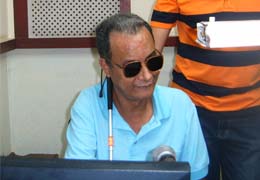“Trust in the constant relation of nature and man … ” José Martí.
The beauty and biodiversity Cuban nature is a tourist attraction that every year contributes hefty income to national economy.
However, tourist access to mountains, rivers, valleys, and coral beds is subjected to rules and regulations that contribute to the sustainable development of the nation, as legislated in the Environment Act, adopted on July 11, 1997 by the Cuban parliament.
These regulations are observed at the International Diving Center located in Maria La Gorda in the Peninsula of Guanahacabibes, in the western end of the province of Pinar del Rio, which was declared a Biosphere Reserve by UNESCO in 1987.
The principle of the protection of natural resources as an identity value of the nation should be observed by every company operating in the zone. This is included in this legislation in its Decree Law 200, which refers to contraventions; and the Decree Law 212, specifically dedicated to the management of the coastal zone.
In the case of María La Gorda, the only facility of its kind in the province of Pinar del Río; there are 79 rooms currently in exploitation, a number that will be soon raised to 103. Visitors can have access to the 32 main dive sites where tey can enjoy the wonder of the sea bottom, which is ranked in the top ten of Latin America for its abundant marine life and lush corals.
In addition to the contemplative diving, visitors can also enjoy underwater photography, boating, sunbathing and beach, and exploring the beauty of the natural environment.
For the safety of tourists and environment conservation, there is a system of compulsory measures. These include a presentation of a scuba certificate, the prohibition of drugs or alcohol consumption, not wearing gloves or knives, and not touch or remove copies of coral, sea fans and other marine species.
Also, in order to contribute to the proper management of wastes, since 2013, the investor plan undertook the operation of a wastewater treatment plant. It process daily a flow rate of 27 cubic meters of liquid waste. This measure prevents the infiltration to wells, which may contaminate the coral fringe.
Similarly, an incinerator is used to dispose of solid waste. This reduces drastically the accumulation of containers and other materials that can contaminate the environment for a long time after being disposed.
Other actions of great impact and environmental benefit are the placing of a buoy line to facilitate the mooring of the boat and prevent the use of heavy anchors, which can sweep the reef life.
As it can be seen in the place, the projection of the International Diving Center in Pinar del Río is an example of what is done in the province to protect nature values, healthy living, and harmony between man and nature.
Translated by: Daysi Olano
Revised by ESTI




